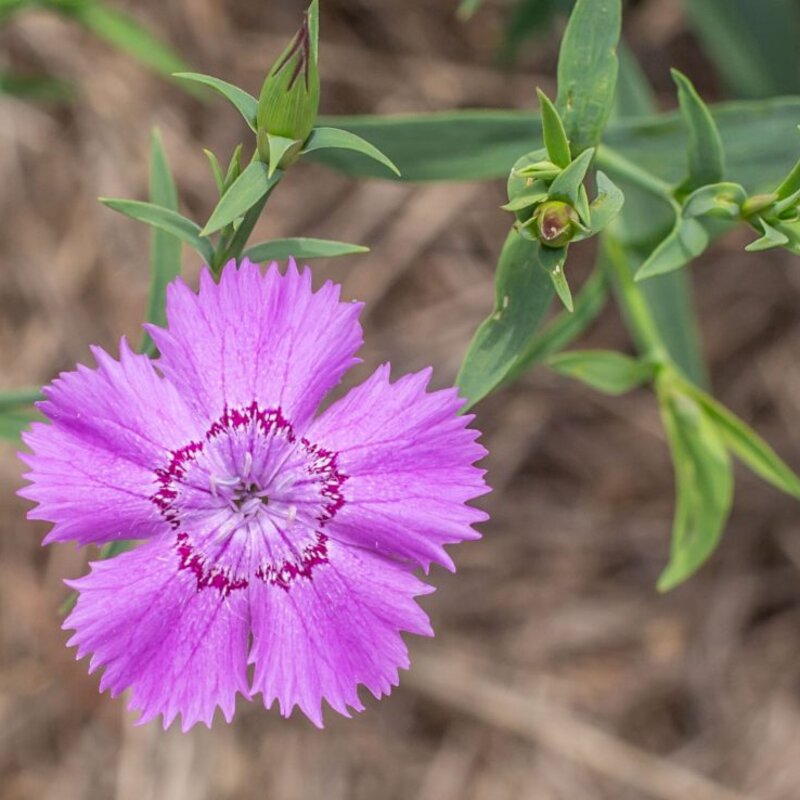Siberian Blues - Eyelets
This species, 30 cm tall and wide, has single flowers that exude an exquisite violet-blue fragrance, quite rare for this species of Chinese Carnation.
Traditional Chinese medicine prescribes it to treat gastrointestinal problems, strengthen blood flow, harmonize menstruation, as a diuretic (dysuria, hematuria, pain, cystitis, gonorrhea, infections...) and to eliminate boils.
Find out more on the Kokopelli blog: "Carnations and other Dianthus in the Pharmacopoeia and Family Magi".
These products may also be of interest to you
in bucket
This cold-weather perennial is grown as an annual. Sow in trays under a light shelter, at a temperature of around 20°C, 4 weeks before planting. Transplant after the last frosts, 15 cm apart in all directions.
Plant the Chinese Carnation in a sunny spot, near a window or on a south-facing terrace, in well-drained soil, as it hates stagnant water.
February, March, April
July, August, September
in the ground, in pot
semi-shade, sunny
medium
Dianthus chinensis
mid-season
100 seeds
Blue, Violet
fragrance
30 cm
Dianthus chinensis, the Chinese Carnation, is native to China, Korea, Russia and Mongolia.
In the Traditional Chinese Pharmacopoeia, this species is called "Qu Mai" or "Ju Mai". It is a bitter tonic. The oldest written source of its medicinal use is found in the medical treatise "Shen Nong Ben Cao Jing" - dating from the second century. This species is associated with the Bladder, Heart and Small Intestine meridians. Traditional Chinese medicine prescribes it to treat gastrointestinal problems, strengthen blood flow, harmonize menstruation, as a diuretic (dysuria, hematuria, pain, cystitis, gonorrhea, infections...) and to eliminate boils. This medicinal plant is also used during laborious childbirth to strengthen blood flow and promote uterine contractions. It is therefore not recommended for pregnant women. It is also used as a diaphoretic, febrifuge, haemostatic and abortifacient, and laboratory studies have demonstrated its high biological activity against liver and cervical cancers. A 2012 Korean study highlighted its biological activity against hepatocellular carcinoma. Another study, in 2013, highlighted its biological activity against esophageal cancer. See Xochi's article: Carnations and other Dianthus in the Family Pharmacopoeia and Magiacopoeia










